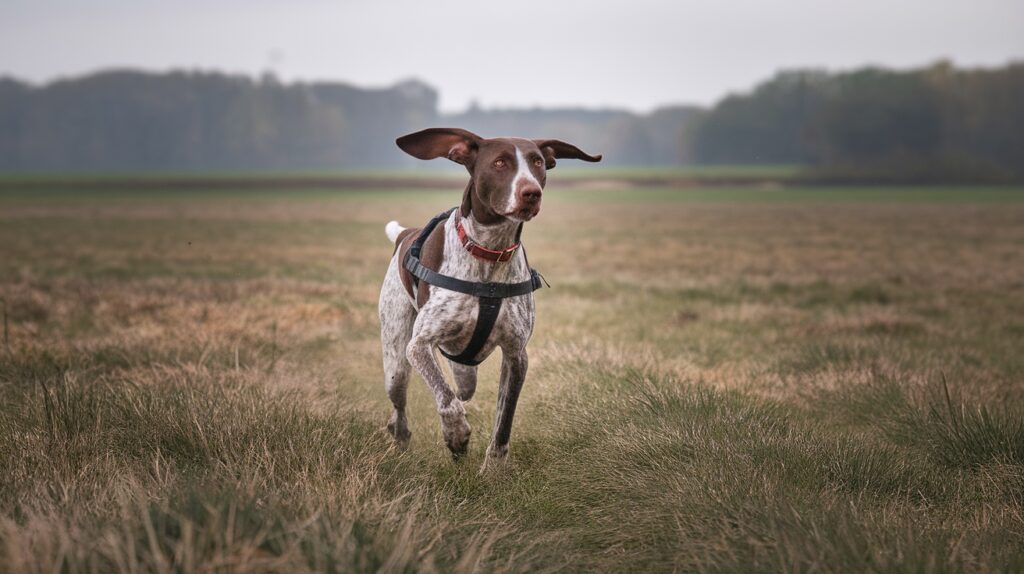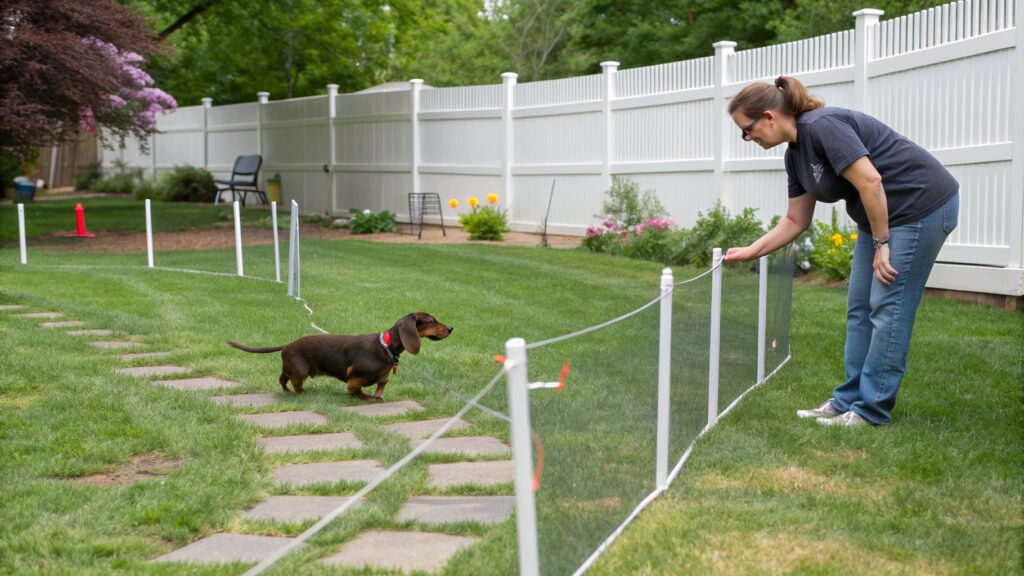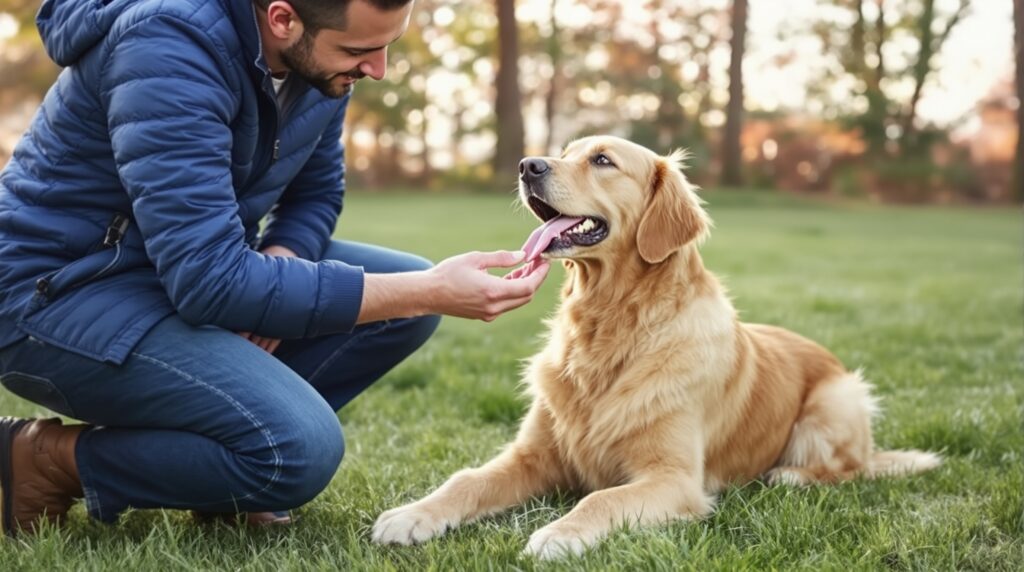German Shorthaired Pointers have tons of energy and sharp minds, which makes training both fun and, honestly, sometimes a bit of a challenge. They thrive when they stay active, but too much energy at the wrong time? That’s when focus goes out the window.
Exercising before training helps set the right balance, making learning smoother and more enjoyable.
When owners get how physical activity connects to training success, they can build routines that really bring out the best in their dogs. Simple pre-training exercise supports better focus and obedience, and it builds a stronger bond through shared activity.
This approach turns training into a more positive and productive experience for everyone involved.
Burns off excess energy for better focus
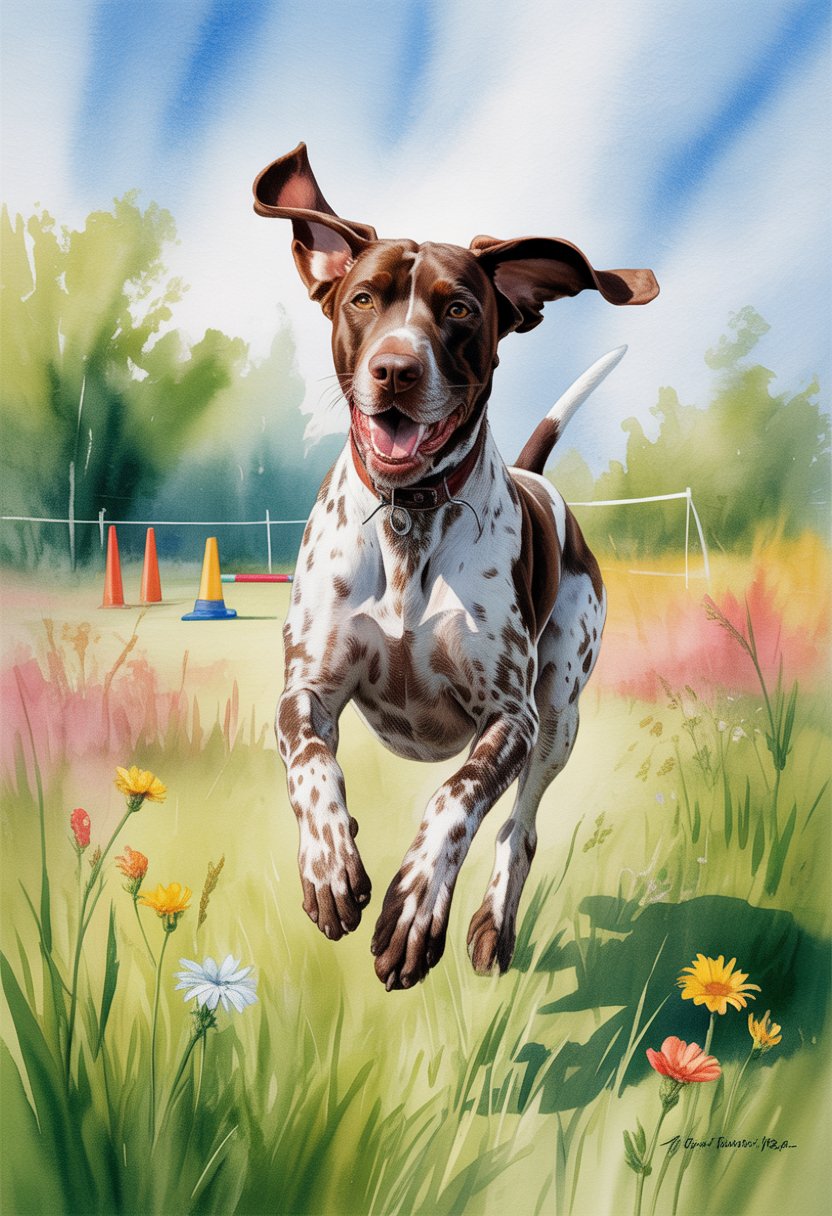
German Shorthaired Pointers are famous for their high energy levels. If they don’t get to burn some of that off, paying attention during training gets tough.
A quick round of exercise lets them release energy in a healthy way. When a dog gets to move and run, the body relaxes afterward.
This calmer state makes it easier for the dog to listen and respond to commands. Instead of being distracted by restlessness, the dog can focus on the task at hand.
Exercise also helps reduce mental stress. Just like people, dogs think more clearly when they’re not wound up.
A tired but not overworked dog is more willing to engage and learn. Even a short walk, jog, or game of fetch can make a real difference.
These activities help the dog settle into training with a clearer mind and steadier focus.
Reduces stubborn behavior during training
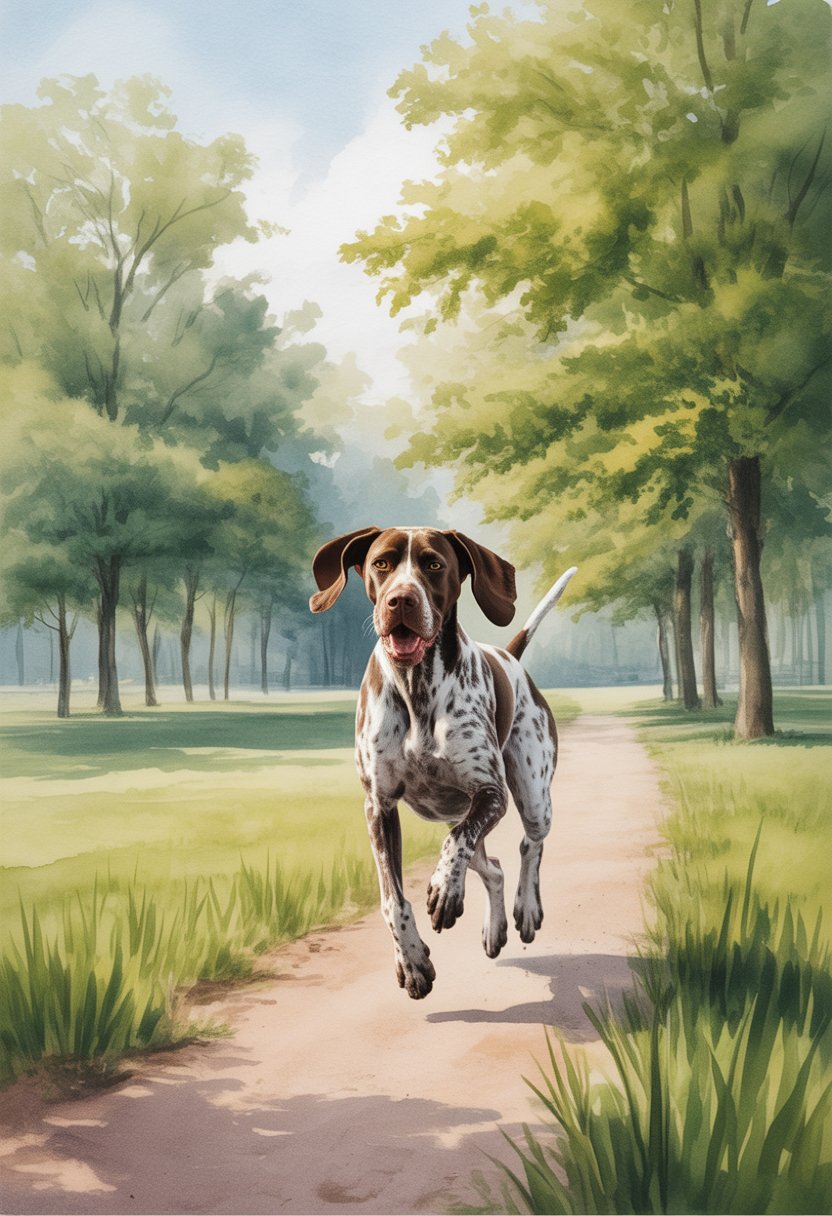
German Shorthaired Pointers can seem stubborn, but a lot of that comes from pent-up energy and excitement. When they have too much energy, they may ignore commands or act distracted.
Exercise before training helps release that extra energy. A dog that’s already run, walked, or played usually settles down and listens much better.
With less restlessness, the dog can focus on what’s being asked. This makes it easier to understand commands instead of resisting them.
Sometimes, what looks like stubbornness is really confusion or frustration. A calm, exercised dog can process lessons with more patience.
By lowering their energy level first, owners give their dog a better chance to cooperate. That simple step can turn a tough session into a smoother one.
Prepares muscles for physical activity

German Shorthaired Pointers have a lot of energy, and their bodies need a minute to adjust before any hard exercise. A quick warm-up helps their muscles get ready for movement.
This makes activity feel smoother and less stressful on their body. When muscles warm up, blood flow increases.
That brings more oxygen and nutrients to the tissues and helps the dog move more freely. Gentle activities like walking or light jogging work well as a start.
These movements slowly raise the heart rate and loosen the joints. The dog becomes more comfortable and ready for faster, more demanding exercises.
By preparing the muscles first, the risk of strains or stiffness drops. The dog can then focus on learning and actually enjoy the training session.
Enhances mental alertness
Exercise helps German Shorthaired Pointers release extra energy before training. When they burn off some of that energy, they can focus better on tasks that require thinking.
A short run, walk, or play session gets their body active and their mind engaged. Physical activity stimulates the brain, which sharpens awareness.
This prepares them to learn and respond more quickly during training. German Shorthaired Pointers are intelligent and curious dogs.
Without exercise, they may become restless or distracted. A bit of activity first helps settle their mind so they can concentrate on learning.
Activities like fetch, agility drills, or scent games combine movement with problem-solving. These types of exercise challenge their brain and help them focus during the training session that follows.
Improves obedience retention
When a German Shorthaired Pointer gets exercise before training, it uses up some of its extra energy. This makes the dog calmer and more focused during lessons.
A calmer state helps the dog pay attention to commands without becoming restless. Exercise also helps the dog’s mind stay sharp.
Physical activity stimulates the brain, which can make it easier for the dog to process and remember new commands. This mental boost supports better learning and recall.
A tired but alert dog is less likely to get distracted by noises or movements around them. With fewer distractions, they can practice commands more consistently.
Consistent practice strengthens obedience and helps the dog retain what it learns. Owners often notice that after a short run or play session, their German Shorthaired Pointer responds faster to cues.
This steady response builds stronger habits. Over time, the dog remembers commands more clearly and follows them with less hesitation.
Strengthens the bond through shared activity
When a dog and owner exercise together, they share focused time that builds trust. The dog learns to look to the owner for guidance, and the owner gets a better sense of the dog’s energy and needs.
German Shorthaired Pointers thrive on interaction. Running, walking, or playing before training gives them a chance to connect in a positive way.
This shared effort helps the dog feel more engaged and ready to listen. Working out together also creates routine.
When the dog expects activity with the owner, it builds consistency and comfort. That routine makes training sessions smoother because the dog feels secure in the shared pattern.
Simple activities like a jog or a game of fetch can make a difference. The dog not only burns energy but also starts to associate the owner with fun and rewarding moments.
This makes cooperation during training feel more natural.
Decreases anxiety and restlessness

German Shorthaired Pointers have a lot of energy, and when it builds up, they can get restless. Exercise gives them a healthy way to release that energy before training begins.
This helps them settle down and focus. Physical activity also lowers stress.
Studies show that regular exercise reduces anxiety in both people and dogs. For a GSP, this means fewer nervous habits like pacing, whining, or chewing when left alone.
When a dog feels calmer, it responds better to commands. A tired GSP is less likely to get distracted by every sound or movement around them.
This makes training sessions smoother and more productive. Exercise also helps prevent separation anxiety.
By meeting their physical needs first, owners reduce the chance of destructive behavior later. A calm, relaxed dog is easier to live with and easier to train.
Builds endurance for longer training sessions

When a German Shorthaired Pointer gets exercise before training, it helps prepare the body for steady activity. Light movement warms up the muscles and joints, making it easier to handle longer periods of focus and work.
Regular pre-training exercise also helps the dog build stamina over time. Just like people, dogs improve endurance when they practice moving for longer stretches.
This means they can stay active and alert during training without tiring too quickly. Activities such as jogging, brisk walking, or short play sessions give the dog a chance to use energy in a controlled way.
These activities strengthen the heart and lungs, which support better performance during training. By starting training with a body that’s already moving and engaged, the dog learns to handle more activity with less fatigue.
This makes each session more productive and comfortable for both the dog and the trainer.
Encourages positive attitude toward commands
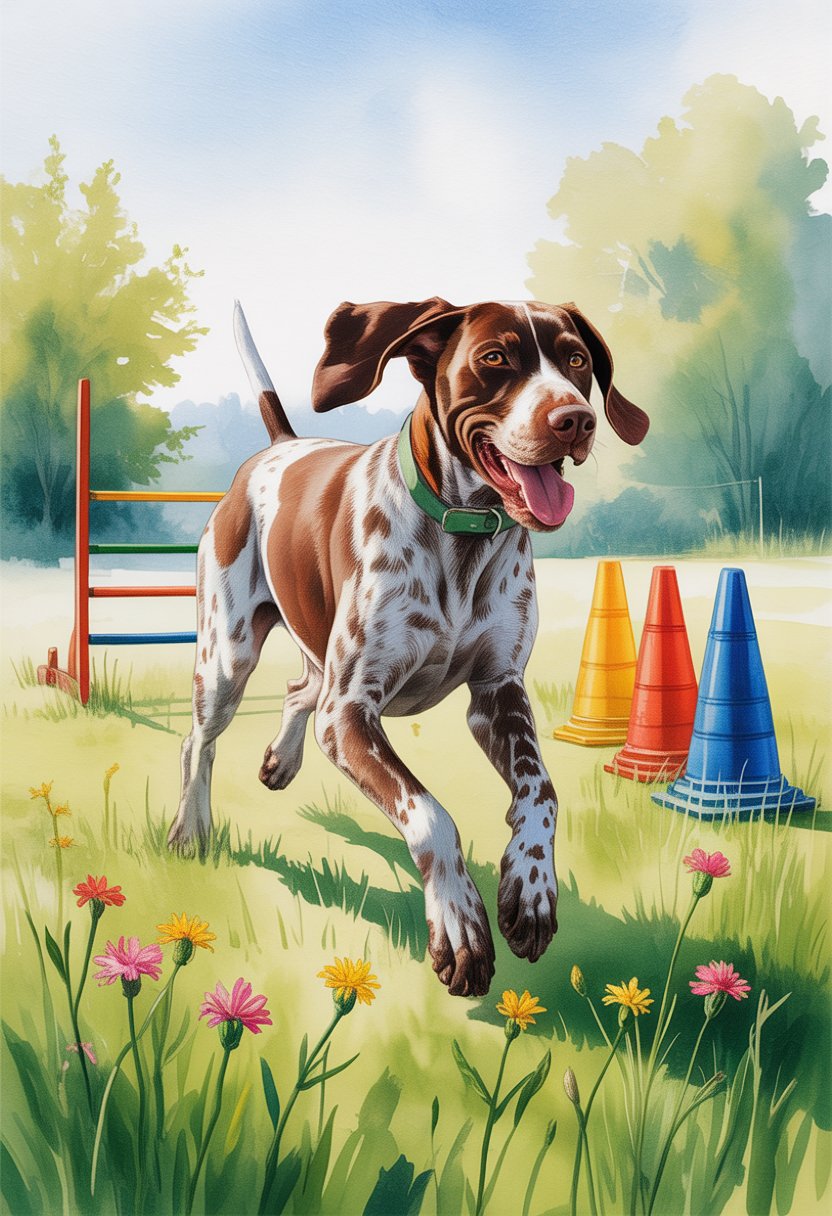
When a German Shorthaired Pointer gets exercise before training, they release extra energy that might otherwise cause restlessness. This helps them approach learning with a calmer state of mind.
A dog that feels relaxed is more likely to listen and respond to commands. Instead of being distracted by pent-up energy, they can focus on what is being asked.
Exercise also puts them in a better mood. A happy dog tends to associate training with positive experiences, especially when paired with praise or treats.
By starting training after physical activity, owners set the stage for cooperation. The dog sees commands as part of a rewarding routine rather than a restriction on play.
This positive attitude makes lessons smoother and more enjoyable for both the dog and the owner. It encourages steady progress without frustration on either side.
Prevents destructive behaviors from boredom
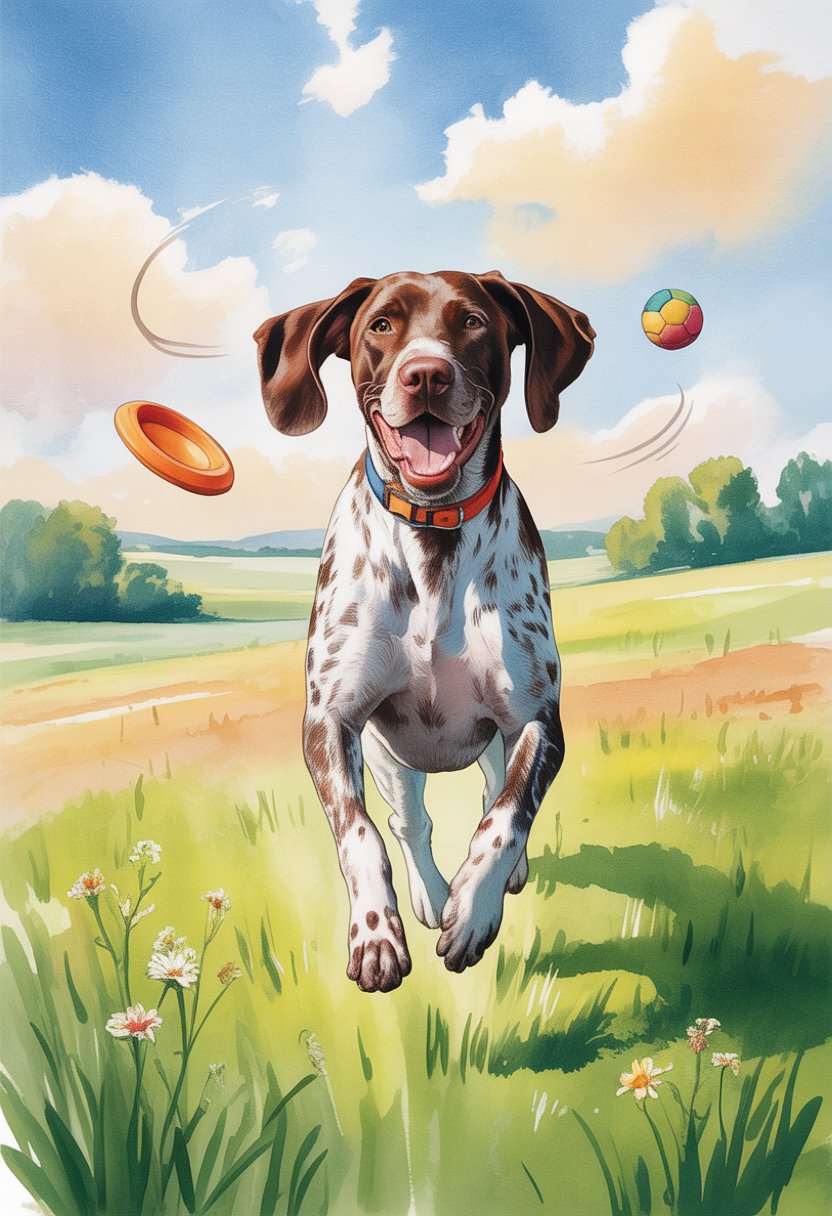
German Shorthaired Pointers have a lot of energy, and when that energy builds up, it often comes out in unwanted ways. Chewing furniture, digging holes, or barking for attention are common signs of boredom.
Exercise before training helps release that extra energy in a positive way. A long walk, run, or play session gives them an outlet, so they feel calmer when it’s time to focus.
When they’re tired, they’re less likely to look for trouble around the house. Instead of tearing up shoes or pacing restlessly, they can settle down and pay attention during training.
Regular exercise also keeps their mind busy. Activities like running, fetching, or agility challenges provide mental stimulation that prevents frustration.
This makes destructive behaviors less appealing and helps them stay balanced. By meeting their physical needs first, owners can reduce the chances of boredom turning into bad habits.
A well-exercised German Shorthaired Pointer is more relaxed, cooperative, and ready to learn.
Understanding Pre-Training Exercise for German Shorthaired Pointers

German Shorthaired Pointers crave both physical activity and mental engagement. If you want them to focus during training, getting their energy out first really helps.
Exercise before lessons lets them burn off steam and arrive at training ready to listen. It’s not a magic fix, but it cuts down on distractions.
Breed-Specific Energy Levels
German Shorthaired Pointers have high stamina and an athletic build. They were bred for hunting, meant to run, track, and retrieve for hours.
That’s why they’re among the most active sporting breeds. If they don’t get enough exercise, they get restless fast.
You’ll notice they can’t settle or focus on commands if they’re wound up. Taking them for a brisk walk, jog, or a quick game of fetch before training makes a real difference.
These activities help tone down their hyperactive side. You’ll see their attention span improve.
Most GSPs need 1–2 hours of daily exercise, usually split into two sessions. Pre-training exercise doesn’t need to be the whole thing—just enough to take the edge off.
A lot of owners say even 15–20 minutes of play calms things down. That’s usually enough to set the stage for learning.
Mental Stimulation Benefits
Exercise isn’t just about tiring them out physically—it works the brain, too. German Shorthaired Pointers are intelligent and curious, so they crave challenges.
Try fetch with hidden toys, short agility drills, or scent games. These activities get them thinking while they move.
When their minds are busy before training, they’re able to focus better. You’ll notice less frustration and fewer distractions.
Mixing up pre-training exercise keeps things interesting. It also makes training sessions more fun for both of you.
How Pre-Training Exercise Enhances Training Success
German Shorthaired Pointers can be a handful if their energy isn’t managed. Giving them exercise before training helps them settle and pay attention.
Reducing Hyperactivity
If they don’t have an outlet, you’ll see jumping, pacing, or barking. A short run, a game of fetch, or a brisk walk helps them burn off that extra energy.
Once they’ve had their exercise, they’re less likely to get restless during lessons. Their bodies feel satisfied, so fidgeting and wandering off happen less.
It’s just easier to hold their attention that way.
Examples of helpful activities include:
- 10–15 minutes of fetch
- A steady jog alongside a bike
- Off-leash play in a safe area
With their energy released, training starts from a calmer place. It’s not perfect every time, but it definitely makes things smoother for both you and your dog.
Improving Focus During Training
German Shorthaired Pointers are smart, but they get distracted by scents, movement, or random sounds. Honestly, it can be tough to keep their attention sometimes.
Letting them exercise before training helps clear their mind. They just seem more ready to listen after burning off some energy.
Physical activity boosts blood flow and wakes up their brain. A tired dog is less likely to dart after every little thing or ignore you completely.
Many trainers say dogs respond faster to cues after a workout. They hold eye contact longer too, which, let’s be real, feels like a small victory.
This makes for more effective sessions where commands actually stick.
Focused training benefits include:
- Faster learning of new commands
- Fewer times you have to repeat yourself
- More consistent performance over time

